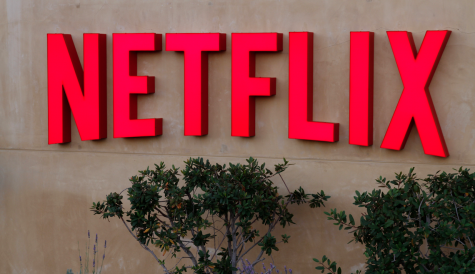Digital marketing matters – strategies for broadcasters and channels
The marketing strategies of broadcasters and channels are changing as viewer behaviour and distribution models start to shift. Andy McDonald reports.
Marketing strategies among channel operators have changed dramatically over the last 10 years, with the internet giving marketers a new voice – as well new content distribution opportunities through online platforms.
Social media has given channel operators and broadcasters a new and direct way to speak to their viewers, but it has also democratised the conversation. Accessibility may have improved, but arguably channels have to work harder for their voice to be heard.
With the proliferation of second screen devices, meeting viewers across the different platforms that they use is more important than ever, but how are channel operators exploiting the opportunities of viral content distribution? And in an increasingly on-demand world, how can channel operators keep their channel brand – and not just their content – front-of-mind for the consumer?
Social engagement
A big part of any channel’s marketing strategy now revolves around social media. As Bakori Davis, vice-president, commercial at A+E Networks UK says: “social is a part of just about everything that we do. When I hear the word ‘social strategy’ it’s the same thing as a digital strategy. It’s not really these separate things any more…. Every campaign that we have is going to have a social element.”
As the two single most popular social platforms, Facebook and Twitter are rightly entrenched in practically all channel operators’ marketing strategies, though how they best use these to effectively entertain or engage audiences is something that in many cases is still being worked out.
In September, National Geographic Channel International reached a milestone of 50 million global fans on Facebook – a figure that the broadcaster reached after it redesigned its global Facebook fan pages to present a single brand. National Geographic Channel’s Facebook fans are now automatically assigned to one of 38 unique regional or country feeds based on their location, with India, Mexico, Brazil, Egypt and the US the countries that notched up the most likes.
Over at the BBC, the UK public broadcaster’s BBC News page has its largest following on Facebook with 11.2 million fans – more than its flagship BBC1 channel or its youth-skewing radio station, BBC Radio 1. For Colin Lawrence, commercial director, BBC World News, Facebook is both a distribution and a promotional platform with a lot of marketing value tied in. Thanks to social media, the corporation’s commercial site, BBC.com, is also seeing an increasing amount of traffic come from referrals.
On Twitter, BBC News (World Edition) currently has 7.45 million followers and, according to viral news data site NewsWhip, the BBC has for the past year been the most tweeted news site on a per-month basis. In August, the BBC accounted for 3.4 million tweets, followed by the New York Times with 2.4 million and ABC News with 1.7 million, said NewsWhip.
Discussing the interaction that viewers can have with BBC News on social media, Lawrence says: “if you take that layer of granularity down, you recognise that some people want direct relationships with some of our presenters. The presenters start to have a following in their own right, and we know that people are following their programmes, so there’s lots of tune-in opportunities and promotional opportunities attached to that as well.”
As well as helping from a marketing perspective, this one-to-one engagement is also helping to inform the content side of BBC News. For example the show Outside Source on BBC World News looks at a news story using the latest information from inside and outside the corporation and includes real-time Twitter interaction from the presenters – a feature that involves the audience in a way that was not possible merely a few years ago.
Under the BBC Trending banner, the corporation last year also started to deliver short-form video broadcasts on Twitter, giving users the inside story behind the latest trending phenomena that day. This came after BBC Global News formed a partnership with Twitter Amplify, the social broadcast network service’s video promotion tool in a first-of-its-kind deal between Amplify and a global news broadcaster.
“You’re getting much more real-time feedback about what audiences are interested in and knowing that they are special areas. I think that’s hugely valuable – so you’ve crossed a line from the traditional broadcast model where we’re telling you things we think you need to know to people coming back to us, genuinely expressing interest in a wider agenda,” says Lawrence.
“Our brand dynamic is partly about people who are having a relationship with the BBC, but we know that who is telling them something really matters. Twitter happens to give people the opportunity of a direct relationship. There are a lot of other things – we do interactive stuff on BBC.com as well – but I think that’s a real asset for us; we know that people like having that closer relationship with the brand and the medium.”
Twittering on
Fox International Channels’ (FIC) managing director for Germany, Marco de Ruiter, says that while social media is “extremely important”, it is developing in different ways. “Let’s take Twitter as the metaphor for everything social media – Twitter is changing. I think Twitter is going from straight conversation to broadcast,” says de Ruiter.
“If you see the peaks in Twitter, they align completely with the high-level live events: the Superbowl, NFL games, the FIFA World Cup,” he says. Referring to social media teams waiting to send out content out over Twitter during major events, he adds: “Instead of broadcasting over an antenna, they broadcast over a network of connections, basically anticipating that the content is strong enough to share.”
The close relationship between broadcast events and social media can be clearly seen. This summer’s World Cup final generated a staggering 32.1 million Tweets. At the final whistle, 618,725 related Tweets per minute were logged – a Twitter record for an event.
The topic has also been subject to much research. According to a YouView census into national television habits for 2014, which was carried out this summer by UK market research firm YouGov, one in seven TV viewers now get recommendations about what to watch from social media, with the same proportion of Facebook users “always or often” using the site to discuss the shows they’re watching.
Meanwhile, research by the Council for Research Excellence in the US, released in April this year, found that some 19% of online Americans aged 15 to 54 are reached by social media relating to primetime TV at least once a day. This included people who see something or post something about a primetime TV show on Facebook or Twitter, with 16% of primetime TV viewing occasions involving “some interaction with social media.”
While FIC’s De Ruiter sees the importance of using Twitter to broadcast to an audience, he says that it is also important to engage them in conversation – something that Fox and other broadcasters are still working to get right.
“There’s so much conversation going on [on Twitter]…we have to learn to turn that into a meaningful conversation,” says De Ruiter, stressing the need to talk like humans, not machines. “Instead of feeding your whole community with constant messaging, say something when you have something to say and be honest when you respond,” he says. “In the past, if people said ‘are you going to broadcast Gotham?’ we always had a standard answer – ‘thanks, that’s a great suggestion, we will pass it on to our programming department.’ That is not the way you do it – people see that it is not authentic. What we are working on with our marketing team and our social media team is if a question like that comes up, give an honest answer: ‘Gotham – great content, love to have it. Unfortunately it is with ProSieben.’ That’s an authentic answer. I think we’re not where we need to be, but that’s the road where we are on [with] social media.”
New face of broadcast
Over at Scripps Networks International, Jonathan Sichel, managing director for the UK and EMEA, agrees that social media must be used for more than the blanket broadcast of promotional material. He argues that the firm, which owns brands like Travel Channel, Food Network and Cooking Channel is better off taking a more nuanced approach.
“Just taking generic marketing material and putting it on Facebook is not going to engage our audience as much as ensuring they get recipes from their favourite chefs,” says Sichel by way of an example. He claims that Scripps’ social platforms should be used to augment the information it offers across its websites and other web platforms in order to engage fans and raise attention for its brands.
“We know what we do – food, travel and home. The field of content is getting more crowded. Our goal is to build enduring brands; to build connections with our viewers so that when they go look for content on YouTube or anywhere else, they immediately think of us, so that they’ll find our content sooner, faster. Using social platforms to build that brand endurance is really important,” says Sichel.
For Viacom, owner of youth-focused channels including MTV and Nickelodeon, its online strategy inevitably includes a high emphasis on social media – and not just based around Facebook and Twitter. “What platforms to use, for us, really depends on the brand,” says Christian Kurz, vice-president of research and insights at Viacom International. “It’s a very different world when it comes to Nickelodeon, because you have to be 13 to have a Facebook account.”
For MTV in particular and Comedy Central “to a degree”, Kurz says Viacom tests practically everything. “We tested Snapchat, we are about to launch a Tumblr [presence], and in the US we already have one. We’re on Vine. We’re obviously on Facebook and Twitter. We’re on VKontakte and Orkut. We are on all of those things and playing around with it. It’s about testing out what piece of content works best on what channel, because what you can’t do is simply take the same thing and put it out on all of them, because that’s not going to work,” says Kurz.
One important place for MTV to test out its social efforts is during its Video Music Awards (VMA) event in the US, and equivalent Europe Music Awards (EMA) show in Europe. According to Nielsen Social stats, this year’s VMAs in August generated 12.6 million tweets in the US about #VMA, with Miley Cyrus’ video of the year win generating 138,792 tweets per minute.
“They are our tent poles, so we test everything here. Some of them work and some of them don’t – it keeps evolving and it keeps changing,” says Kurz. However, he admits that the lessons learned during these big ‘tent pole’ events do not necessarily apply to MTV’s weekly output.
In the US, for example, for MTV’s drama series Teen Wolf, Kurz says the channel aims to use social and online as a whole to “keep the fanbase engaged while the season is off air.” He also says that some drama does not lend itself to simultaneous social engagement, because the audience is engaged and may not want to miss what is happening on the main screen.
Though Kurz says that, in general, ‘watch with’ style apps seem to be “slightly going away,” Viacom is still catering to its audience through various second-screen services. This includes MTV Europe’s Under The Thumb app, which includes a video player and access to TV episodes and MTV content, along with a ‘what’s hot’ guide and remote control functionality. Viacom has also launched a Nickelodeon app in the UK, Latin America and the US that is heavily focused around casual gaming, as well as providing access to videos.
Going viral
The viral dissemination of content over the web, while an obvious goal for channel marketers, also speaks to the changing nature of how viewers are engaging with and consuming content more generally.
“I think in terms of technology, obviously it’s not just about television anymore. It hasn’t been for a long time. Our audiences are watching billions and billions of hours worth of short-form . They’re not just watching our programmes when we schedule them and how we want them to,” says A+E Networks UK’s vice-president of marketing and communications, Anna Priest.
Heading up marketing communications for various A+E Networks-owned channel brands across the UK, eastern Europe, the Middle East and sub-Saharan Africa, Priest claims that consumers are far less likely these days, to “just take what you say”. Integrating and understanding audiences, being on the sites and services they use and even offering them tools to participate more are all becoming increasingly important, she says.
“Our audiences now can curate their own content, they can make their own trailers, they can make their own posters, they can actually slam one of your shows and make nobody watch it by massively talking about it on Twitter or Facebook. So there’s a real power-shift there from our advertising agencies and PR agencies over to the consumer,” says Priest.
For A+E, Priest says the question rests around how to embrace fan input. “We sometimes re-employ the people that have got massive fanbases,” she says. “If they’ve got millions and millions of fans, instead of shutting them down, why don’t we employ them? They’re doing a really good job – we can learn from that and we can get those fans to watch our content, potentially when we want them to, but monestise it in some way.”
One example of A+E embracing its audience in this way was when a fan posted a homemade promo for season two of A&E’s US drama Bates Motel onto YouTube. A&E Networks’ executive vice-president of marketing, Guy Slattery, spotted the professional-looking clip and was so impressed he contacted the video maker and offered him an official commission and access to the cast to make another ad spot for the programme.
“Guy Slattery was looking for the big piece of marketing, the big piece of artwork. We weren’t getting it right and then he found one online and it was done by a consumer. So [we can] talk to that person and turn it into a good news story,” says Priest.
Creating and facilitating the spread of viral clips is something that channels can pay more attention to as part of their marketing strategies. However, FIC’s de Ruiter claims that certain content works better than others when it comes to this kind of activity.
The FIC-owned National Geographic Channel, with its trademark nature content, is a good place for developing virals, claims de Ruiter, as opposed to the Fox network. “With our high-end, mainstream content, there’s not a lot of material that you can share, so I think a viral strategy of sharing content does not fit the type of network we are.”
Programmes v. channels
In a broader sense, the changing face of the web and social media is arguably changing the way that channels think about how they can most effectively market themselves. As platforms like Netflix increasingly establish themselves as trusted household brands, the linear channel as a curator of content must work harder to establish the connection between themselves and the programme brands they own or have the broadcast rights to.
“Our traditional marketing [of] Fox as a channel was basically focused more around Walking Dead as a franchise, Doctor Who as a franchise, Mad Men as a franchise. Our challenge is how do we make [it so] that the viewer makes the connection that the Walking Dead runs first on Fox,” says de Ruiter.
Looking forward, he says: “Our whole marketing approach will be much more focused on making the exclusive connection between our brands as a curator and the content franchise as a carrier. Social media becomes a lot more important, seeking the conversation into the fan community, being credible in the conversation, being seen as somebody who discovers content.”
Viacom’s Kurz says that it is still unclear whether channel, platform or programme brands are the more important. “As an industry we probably still need to do a lot of work to figure out how that works best,” he says. “If it [a channel brand] has the MTV label or the Nick label or the Comedy Central label, that is a quality criteria. Therefore, it’s an endorsement, from an aggregator point of view.”
At A+E Networks UK, Davis says that, from a behavioural point of view, millennials are “probably less loyal” than older viewers. For these younger viewers “it’s more about ‘what’s in it for me right now,’ so you have to programme as such,” he says.
While brand trust and loyalty is important, Davis admits that “in the US, our company only markets the shows – it never drives tune-in to a channel”.
“It [A+E Networks] doesn’t do image spots, but, in my mind, there’s a discovery function that’s important. When you know the type of content that you’re going to find on a channel, to me that will always have its place.”
Over at Scripps, Sichel says that it is the firm’s channels – which cater to broad lifestyle categories such as cooking and travel – that are the main attraction for the viewer, as opposed to single show brands.
“From a consumer standpoint, it is our channel brands – Food Network, Travel Channel, Fine Living – that is important, so when people say ‘I want to watch food television,’ they can immediately think of Food Network,” says Sichel.
While channels and their operator partners have to work hand-in-hand for the traditional pay TV model to continue to prosper, there is an increasing battle for exposure that to some extent mirrors the ongoing fight for online content rights.
The internet has arguably made the marketing landscape a far trickier place to navigate, but has also placed more power than ever before in the hands of the channels and broadcasters to reach their viewers.




